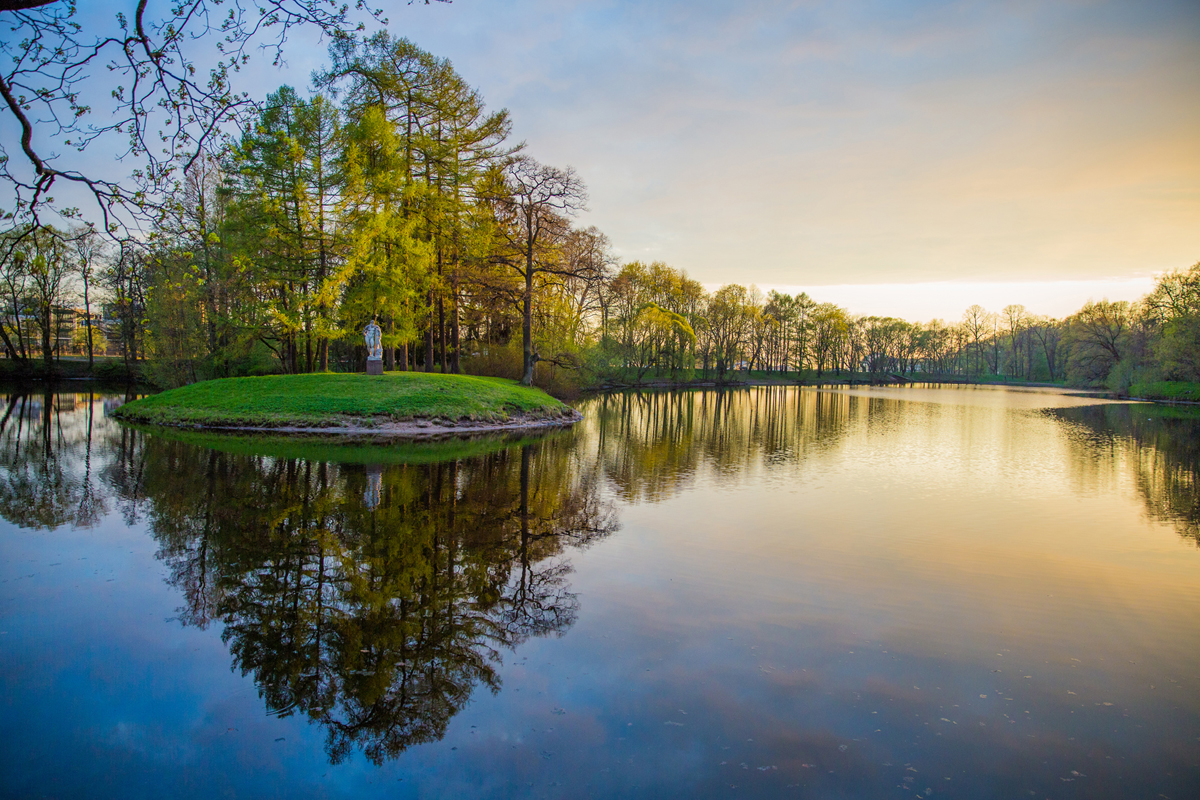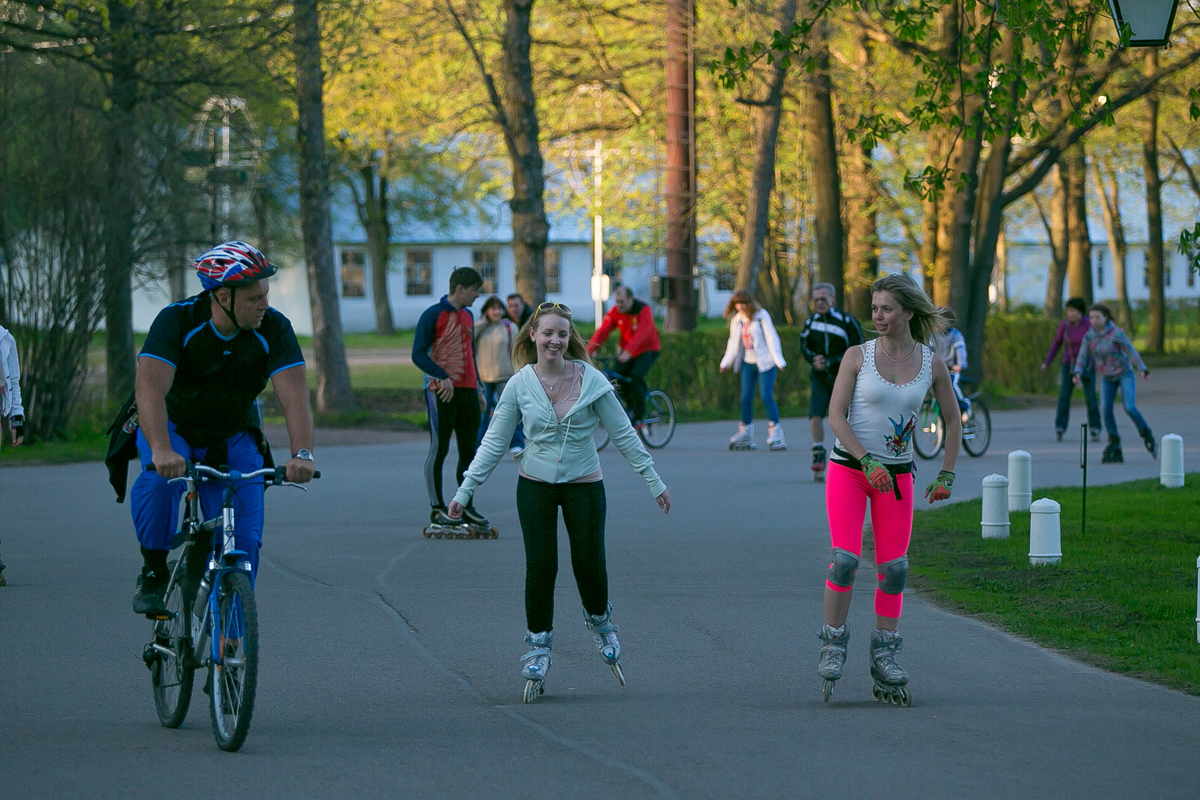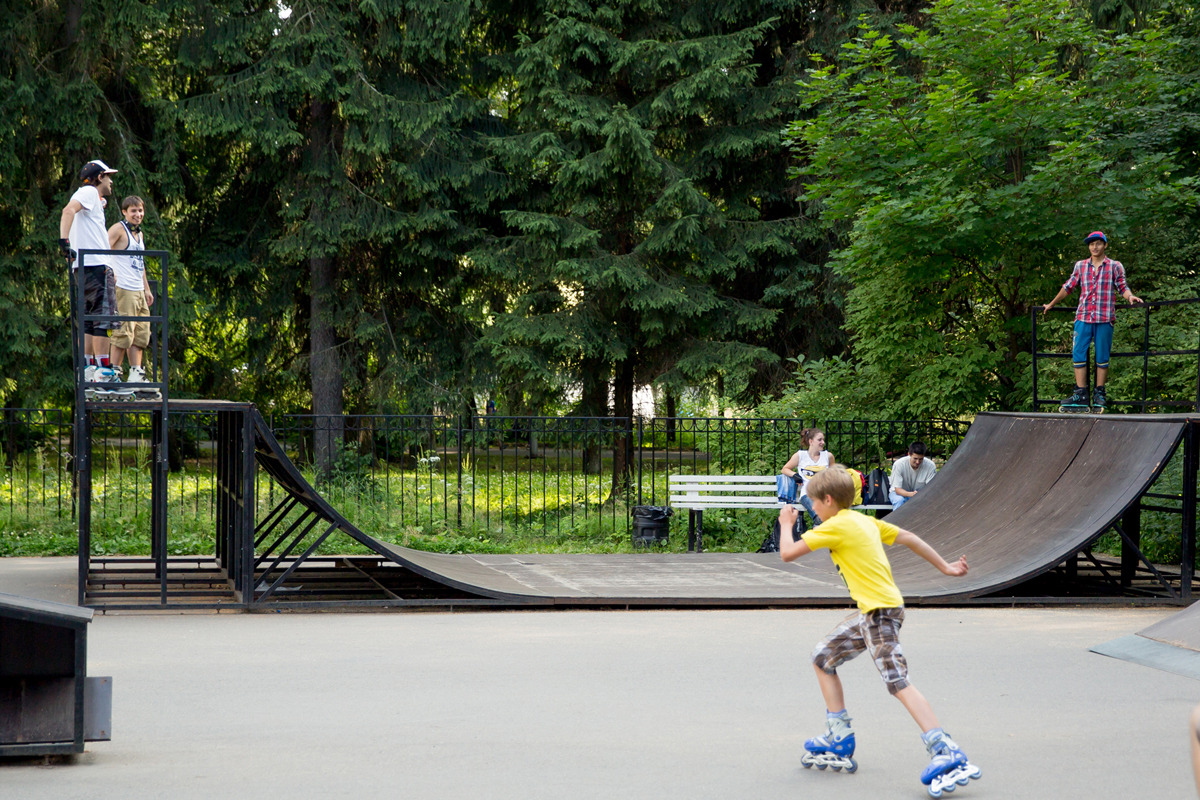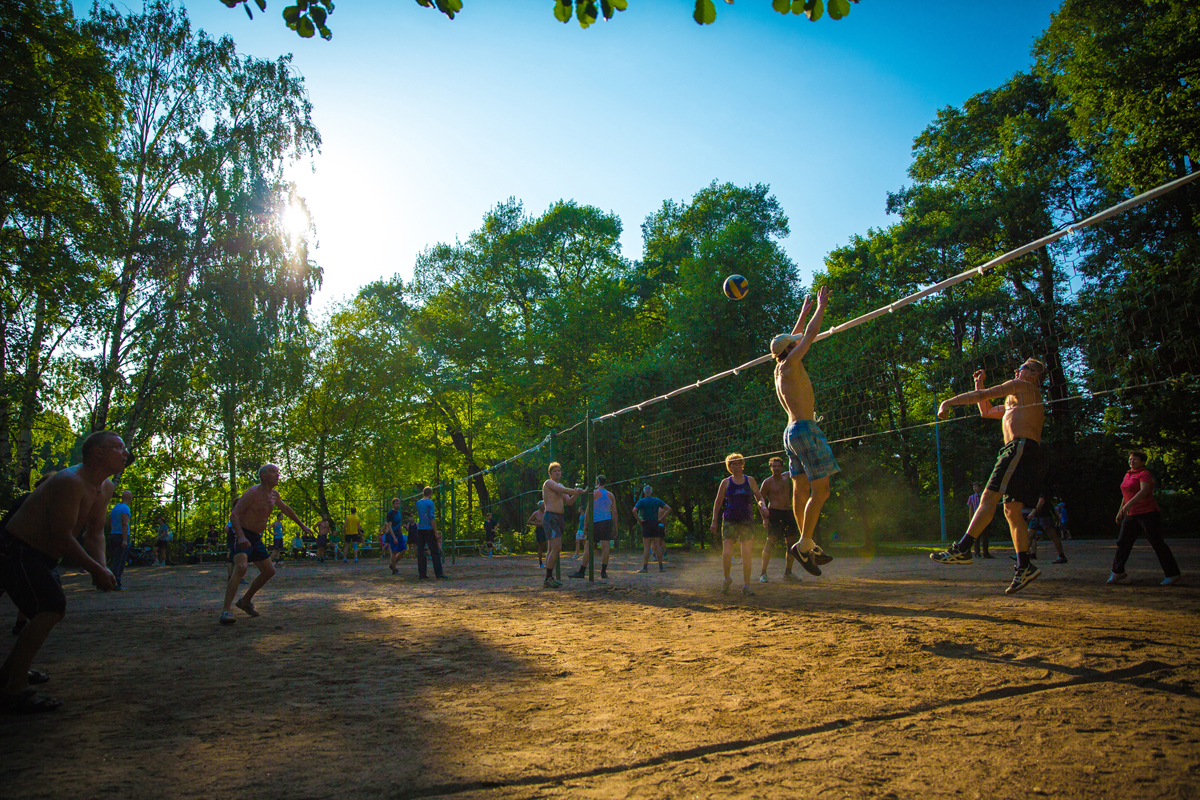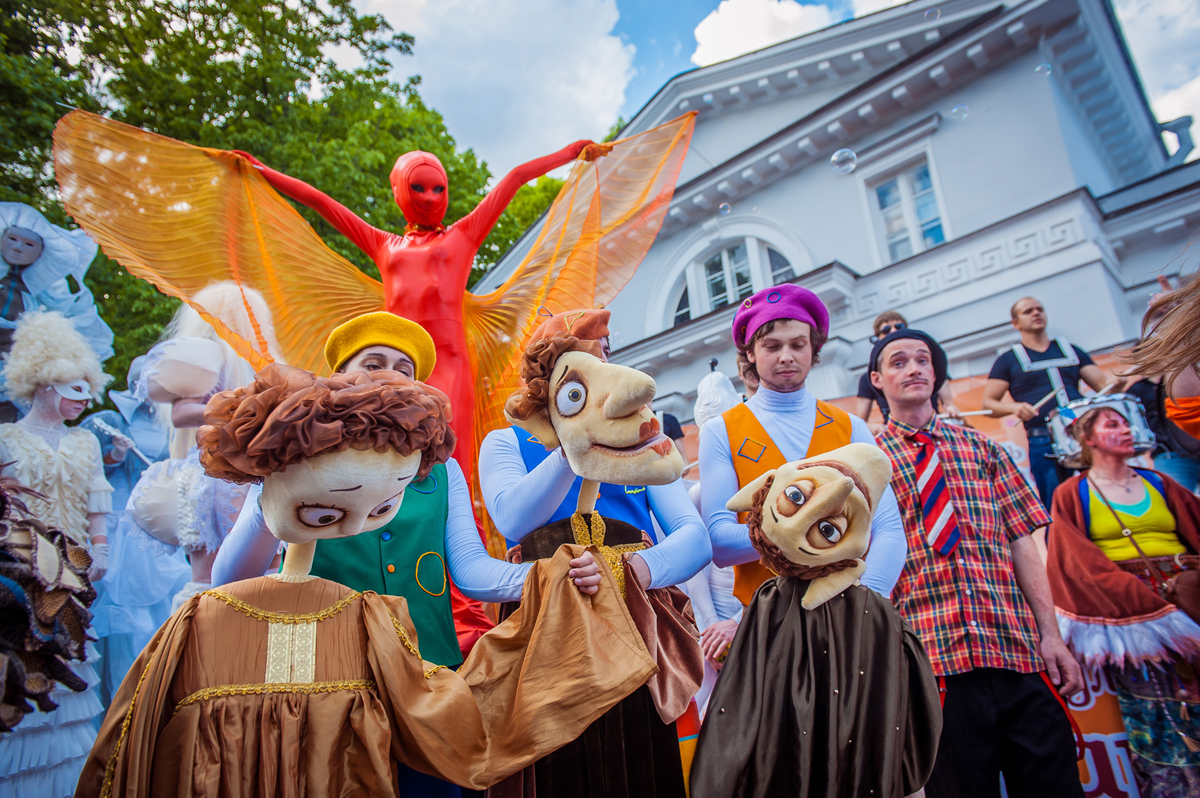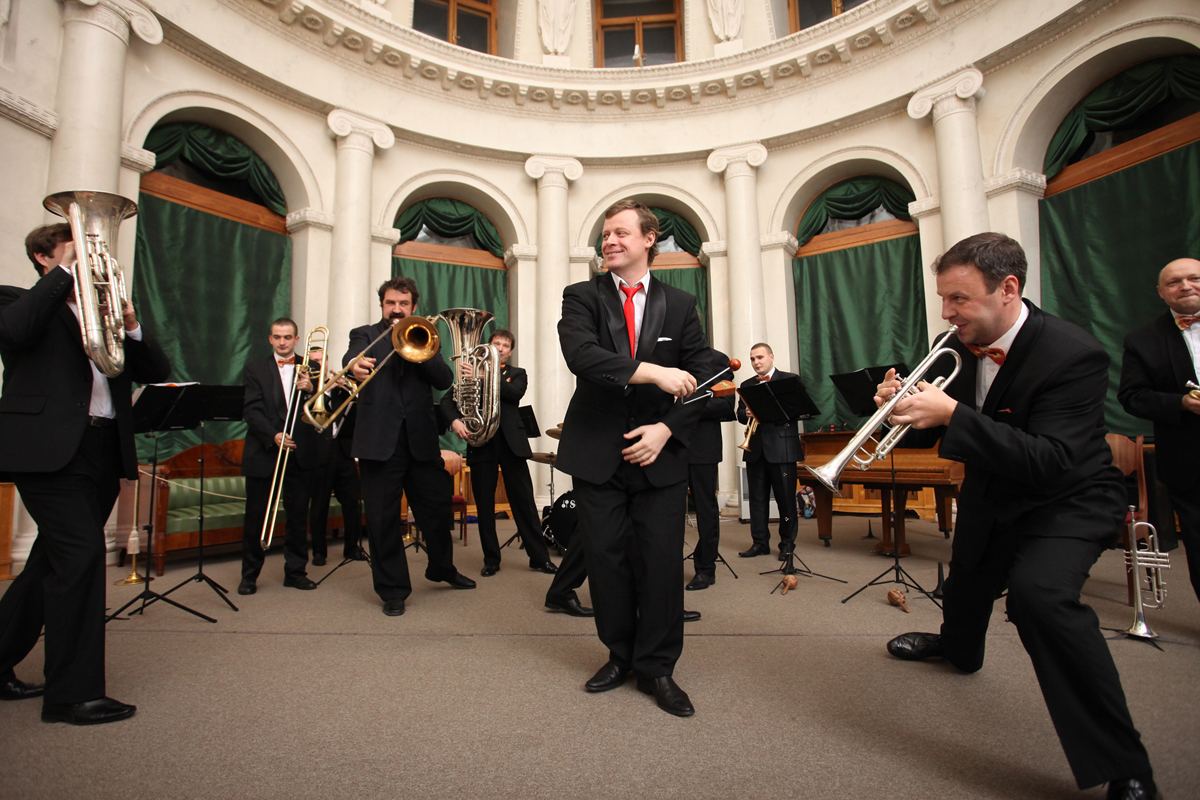Yelagin island
Yelagin Island is a unique protected natural complex. It is the northernmost island in the Neva delta, laved with Big Nevka in the north, with Central Nevka in the south and south-east, and shooting out with the narrow cape into the Gulf of Finland. At one time a royal residence, Yelagin Island since the middle of last century passed into the possession of the state and became the Central Park of Culture and Recreation, and from this moment it opened its doors to all comers.
Today Kirov Central Park is a dynamically developing cultural and recreational space, suitable for audiences of different age groups and interests.
In the park, in Yelagin island palace, there is the Museum of Russian arts and crafts and interior of XVIII-XX centuries, with a permanent exhibition on the first and second floors, which demonstrates the everyday objects of past epochs. For guests of the park there are prepared various excursion programs, telling the history of the park and palace. In the palace there are costumed tours which offer everyone to learn ballroom etiquette XIX century.
Every Wednesday the series of concerts “Yelagin Evenings” takes place in the Fraulein Building. There you can hear the music of all styles - from classical to jazz, from folk to tango, from medieval to avant-garde.
In the halls of the Stables building are placed temporary exhibitions of contemporary artists.
In the only St. Petersburg Museum of Art Glass is a collection of works by Leningrad factory of glass art, as well as works made by masters of glass-making of Russia and abroad. The Glass art Museum invites glass artists and curators for personal and collective exhibition projects.
At the Museum of Art Glass there is a Glassblowing Workshop, where both professional and amateur artists can create their works in various techniques of hot glass working.
In the park, outdoor, throughout the year cultural events take place which have already become the hallmark of Kirov Central Park. The most impressive of these are:
Kirov Central Park is ideal for outdoor activities in all seasons. In summer there are special volleyball courts, rollerdrom. In winter there are two skating rinks and a ski run. In the park all year round work bases, which rent sports equipment, where everyone can take figure skates, a pair of skis, Finnish sledge, rollers and bicycles. In winter at the Big Square around the Christmas tree there is a skating rink, which for many generations of urbanites has become a favorite place for winter recreation.
In hot day it’s excellent see the park from a new perspective - from the water surface of ponds, surrounding the whole island. For guests of the park there is a hire of boats and catamarans.
For the elderly in the Park created the Club “Health”. It is an excellent way to maintain your body in good shape. Daily groups are engaged in charging in the open air on the territory of Kirov central Park.
In the Western part of the island there is a mini-zoo. Its inhabitants - the reindeer, the Cameroonian tiny goats, fox Alice, she-ass Kamilla, fancy hens, pheasants, turkeys and guinea fowls, - will be interesting to both small and big city dwellers.
Yelagin Island is a favorite place of many generations of residents, a great opportunity to the whole family to relax from daily vanity.
More information and applications to participate the cultural activities e-mail: okp@elaginpark.org
More information about the excursions: excursion@elaginpark.org
Operating Hours
The history of the park
The history of Yelagin Island, the 18th century
Creating a new capital of the Russian Empire on the banks of the Neva river, Peter The Great strove to equip the surrounding territories, handing them out to his loyalists. In 1709 the first owner of the island was Vice-Chancellor Baron Peter Shafirov (1669-1739), a well-known diplomat and statesman. During the 18th century the island changed nine noble owners and was renamed several times. Its original name in Finnish was "Mistula Saari".
On the map of Petersburg of 1703 the island already appeared as Mishin or Mikhailin. According to the legend, this name was fixed after the island, after an incident of meeting here a big bear by a patrol of Russian soldiers. The name "Mishin" remained throughout the XVIII century as official. The island received its current name on behalf of its fifth owner - Ivan Yelagin (1725-1794), the chief chambermaster of the imperial court, which was famous for his hospitality.
Appreciating the exceptional beauty of the Island, each owner in his own way tried to transform and beautify it, inviting to work the best park constructors and florists. Especially famous were greenhouses, where rare plants and exotic fruits were grown.
The history of Yelagin Island, the 19th century
By the beginning of the XIX century, the maintenance of a large estate located on Yelagin Island became burdensome, and the last private owner of the island - Grigory Orlov (1778-1826) in 1817 sold it out to the treasury for three hundred and fifty thousand rubles.
In 1817 the island was bought by the Cabinet of His Imperial Majesty. Since that time a new page in the history of Yelagin Island had begun. For the next hundred years it was passing into the possession of the Russian Imperial House. In 1818 Emperor Alexander I established a "committee for the reconstruction of the former Yelagin Palace, the construction of kitchen corps and stables corps, the alteration of a large stone greenhouse and other things on Yelagin Island."
The chief architect of the construction was K. Rossi, little-known in St. Petersburg that time. He was told to rebuild the Palace, create new service buildings and equip the island for the summer stay of the widowed Empress Maria Feodorovna. It wasn’t easy to win favor of the brilliant Pavlovsk ensemble mistress. Rossi had not only designing tasks, but also spatial, landscape, interior, and decorations. This unique situation allowed his talent to manifest itself in all its completeness. The architect did not confine himself only to the reconstruction of the palace and office space, but transformed the whole island entirely.
The preliminary estimate compiled by Rossi was impressive – 1 288 649 rubles, and with the park works it increased up to 158 732 rubles. Rossi had to perform construction work, but the improvement of the island itself and the redevelopment of the park were entrusted to the highly experienced garden master Joseph Bush Jr., famous for the creation of Pavlovsk and Tsarskoselsky parks. The general plan of the Palace ensemble on Yelagin Island, based on the principle of a landscape park with the asymmetry and picturesqueness, was developed by Rossi and Bush together. They turned the island into Isola bella of the Russian North -" a beautiful island ", and the park became one of the most beautiful parks in Europe.
During the two years of reconstruction works the Palace was completely rebuilt. The year 1822 is considered as the end date of all works, as well as interior decoration. Everything were done extremely fast as the palace was to be fully prepared for the name-day of the Empress, "according to the will of the Emperor, no later than July 20, 1822," although a lot of work connected with other buildings on the island continued for several more years.
For a hundred years the island remained in the possession of the Romanovs and was a favorite vacation spot for the imperial family. For many years the Yelaginostrovsky Palace has formed a unique collection of works, originally performed according to the plan of the great architect, interior and decorative arts master - Carlo Rossi.
The history of Yelagin Island, the 20th century
By the decision of the Central Committee of the All-Union Communist Party of the Bolsheviks and Council of People's Commissars of the USSR of 02.12.1931 there was a Central park created. The opening took place on August 5, 1932.
The place became the most popular resting spot for the citizens of Leningrad. After the death of Sergey Kirov in 1934, Krestovsky, Yelagin and Kamenny Islands were renamed as Kirovskie, and the Central Park was named after Kirov. There are numerous attractions, sport and children's playgrounds built. And a central avenue was laid from the Palace to the West end of the island, decorated with sculptural compositions "Gymnasts on a log", "Discus thrower", "Discobolus", "Ballerina Ulanova" made by famous Soviet sculptors Manizer and Janson-Manizer. It determined the aesthetic orientation of the whole park for many years.
During the years of war, the Palace and park ensemble suffered a great deal: the interiors of the Palace and many park pavilions were badly damaged. After the end of the war the restoration work had begun Immediately, and in 1961 the revived palace received first visitors as the one-day rest base for workers with exhibition halls on the first floor. Those years, the park became the main zone of active rest of all citizens. As a result of unregulated visits to the park, the landscape was severely damaged.
During the 1980-1990s in the park were recreated to the o riginal form. In 1987 the Museum of Russian Decorative, Applied Arts and Interior of 18-20th centuries was opened in the Yelaginostrovsky Palace.
Still the Yelaginoostrovsky Palace and park ensemble, that preserved the original charm, has been a favorite resting spot for many generations of Petersburg citizens for three centuries in a row.
The history of Yelagin Island, the 21st century
In 2006 the Government of St. Petersburg adopted the Resolution about " The plan of measures for the development of the territory of Yelagin Island", with the main directions for the restoration of historical and architectural objects, the reconstruction of the landscape and the ecological environment of the park.
In 2012 the natural complex of Yelagin Island was declared as monument of nature of regional significance "Yelagin Island", and the territory occupied became a specially protected natural area of regional importance.
Today Kirov Central Park is a dynamically developing cultural and recreational space, suitable for audiences of different age groups and interests.
In the park, in Yelagin island palace, there is the Museum of Russian arts and crafts and interior of XVIII-XX centuries, with a permanent exhibition on the first and second floors, which demonstrates the everyday objects of past epochs. For guests of the park there are prepared various excursion programs, telling the history of the park and palace. In the palace there are costumed tours which offer everyone to learn ballroom etiquette XIX century.
Every Wednesday the series of concerts “Yelagin Evenings” takes place in the Fraulein Building. There you can hear the music of all styles - from classical to jazz, from folk to tango, from medieval to avant-garde.
In the halls of the Stables building are placed temporary exhibitions of contemporary artists.
In the only St. Petersburg Museum of Art Glass is a collection of works by Leningrad factory of glass art, as well as works made by masters of glass-making of Russia and abroad. The Glass art Museum invites glass artists and curators for personal and collective exhibition projects.
At the Museum of Art Glass there is a Glassblowing Workshop, where both professional and amateur artists can create their works in various techniques of hot glass working.
In the park, outdoor, throughout the year cultural events take place which have already become the hallmark of Kirov Central Park. The most impressive of these are:
- Festival of Traditional Culture “Roar, Maslenitsa festival” - a great holiday for all, where you can plunge into the atmosphere of fun, creativity and native Russian traditions;
- Tulip Festival - a great spring holiday that turns Yelagin island into a residence of various flower colors;
- International Street Theatre Festival “Yelagin Park” – the most colorful and memorable event of the summer season. The distinctive feature of the festival is the absence of boundaries between audience and artist, hall and stage. Any spectator and even a passerby can become a participant of a live theatrical performance in the open air. More than 15 groups take part in the festival, performing more than 100 shows at 12 different locations in the park. / If you have any proposal of performances you would like to offer for participation in the International Festival of Street Theatres “Yelagin park” - please, send it to the official festival’s e-mail address: okp@elaginpark.org.
- International exhibition “Glass and Ceramics in the landscape” - a unique exhibition in the open air, where you can see different in form and technique of execution bright and witty works of ceramics and glass;
- During the summer, the “Yelagin PRO festival - professionally about everything” - takes place, featuring scientific and cognitive lectures, creative and dance master classes, music concerts and yoga classes. Every weekend on the square near Stables building there is an improvised dance floor with live music, which takes the military brass band.
Kirov Central Park is ideal for outdoor activities in all seasons. In summer there are special volleyball courts, rollerdrom. In winter there are two skating rinks and a ski run. In the park all year round work bases, which rent sports equipment, where everyone can take figure skates, a pair of skis, Finnish sledge, rollers and bicycles. In winter at the Big Square around the Christmas tree there is a skating rink, which for many generations of urbanites has become a favorite place for winter recreation.
In hot day it’s excellent see the park from a new perspective - from the water surface of ponds, surrounding the whole island. For guests of the park there is a hire of boats and catamarans.
For the elderly in the Park created the Club “Health”. It is an excellent way to maintain your body in good shape. Daily groups are engaged in charging in the open air on the territory of Kirov central Park.
In the Western part of the island there is a mini-zoo. Its inhabitants - the reindeer, the Cameroonian tiny goats, fox Alice, she-ass Kamilla, fancy hens, pheasants, turkeys and guinea fowls, - will be interesting to both small and big city dwellers.
Yelagin Island is a favorite place of many generations of residents, a great opportunity to the whole family to relax from daily vanity.
More information and applications to participate the cultural activities e-mail: okp@elaginpark.org
More information about the excursions: excursion@elaginpark.org
Operating Hours
- Park operating hours: from 06.00 to 23.00, daily
- Night time from 23.00 to 06.00 the entrance to the park is prohibited.
- From 10.00 to 22.00, weekends and holidays only.
- 10.00 - 18.30 (except Monday and Wednesday)
- 10.00 - 17.30, pre-holidays day
- 13.00 - 21.00 every Wednesday
- Day-off – Monday
The history of the park
The history of Yelagin Island, the 18th century
Creating a new capital of the Russian Empire on the banks of the Neva river, Peter The Great strove to equip the surrounding territories, handing them out to his loyalists. In 1709 the first owner of the island was Vice-Chancellor Baron Peter Shafirov (1669-1739), a well-known diplomat and statesman. During the 18th century the island changed nine noble owners and was renamed several times. Its original name in Finnish was "Mistula Saari".
On the map of Petersburg of 1703 the island already appeared as Mishin or Mikhailin. According to the legend, this name was fixed after the island, after an incident of meeting here a big bear by a patrol of Russian soldiers. The name "Mishin" remained throughout the XVIII century as official. The island received its current name on behalf of its fifth owner - Ivan Yelagin (1725-1794), the chief chambermaster of the imperial court, which was famous for his hospitality.
Appreciating the exceptional beauty of the Island, each owner in his own way tried to transform and beautify it, inviting to work the best park constructors and florists. Especially famous were greenhouses, where rare plants and exotic fruits were grown.
The history of Yelagin Island, the 19th century
By the beginning of the XIX century, the maintenance of a large estate located on Yelagin Island became burdensome, and the last private owner of the island - Grigory Orlov (1778-1826) in 1817 sold it out to the treasury for three hundred and fifty thousand rubles.
In 1817 the island was bought by the Cabinet of His Imperial Majesty. Since that time a new page in the history of Yelagin Island had begun. For the next hundred years it was passing into the possession of the Russian Imperial House. In 1818 Emperor Alexander I established a "committee for the reconstruction of the former Yelagin Palace, the construction of kitchen corps and stables corps, the alteration of a large stone greenhouse and other things on Yelagin Island."
The chief architect of the construction was K. Rossi, little-known in St. Petersburg that time. He was told to rebuild the Palace, create new service buildings and equip the island for the summer stay of the widowed Empress Maria Feodorovna. It wasn’t easy to win favor of the brilliant Pavlovsk ensemble mistress. Rossi had not only designing tasks, but also spatial, landscape, interior, and decorations. This unique situation allowed his talent to manifest itself in all its completeness. The architect did not confine himself only to the reconstruction of the palace and office space, but transformed the whole island entirely.
The preliminary estimate compiled by Rossi was impressive – 1 288 649 rubles, and with the park works it increased up to 158 732 rubles. Rossi had to perform construction work, but the improvement of the island itself and the redevelopment of the park were entrusted to the highly experienced garden master Joseph Bush Jr., famous for the creation of Pavlovsk and Tsarskoselsky parks. The general plan of the Palace ensemble on Yelagin Island, based on the principle of a landscape park with the asymmetry and picturesqueness, was developed by Rossi and Bush together. They turned the island into Isola bella of the Russian North -" a beautiful island ", and the park became one of the most beautiful parks in Europe.
During the two years of reconstruction works the Palace was completely rebuilt. The year 1822 is considered as the end date of all works, as well as interior decoration. Everything were done extremely fast as the palace was to be fully prepared for the name-day of the Empress, "according to the will of the Emperor, no later than July 20, 1822," although a lot of work connected with other buildings on the island continued for several more years.
For a hundred years the island remained in the possession of the Romanovs and was a favorite vacation spot for the imperial family. For many years the Yelaginostrovsky Palace has formed a unique collection of works, originally performed according to the plan of the great architect, interior and decorative arts master - Carlo Rossi.
The history of Yelagin Island, the 20th century
By the decision of the Central Committee of the All-Union Communist Party of the Bolsheviks and Council of People's Commissars of the USSR of 02.12.1931 there was a Central park created. The opening took place on August 5, 1932.
The place became the most popular resting spot for the citizens of Leningrad. After the death of Sergey Kirov in 1934, Krestovsky, Yelagin and Kamenny Islands were renamed as Kirovskie, and the Central Park was named after Kirov. There are numerous attractions, sport and children's playgrounds built. And a central avenue was laid from the Palace to the West end of the island, decorated with sculptural compositions "Gymnasts on a log", "Discus thrower", "Discobolus", "Ballerina Ulanova" made by famous Soviet sculptors Manizer and Janson-Manizer. It determined the aesthetic orientation of the whole park for many years.
During the years of war, the Palace and park ensemble suffered a great deal: the interiors of the Palace and many park pavilions were badly damaged. After the end of the war the restoration work had begun Immediately, and in 1961 the revived palace received first visitors as the one-day rest base for workers with exhibition halls on the first floor. Those years, the park became the main zone of active rest of all citizens. As a result of unregulated visits to the park, the landscape was severely damaged.
During the 1980-1990s in the park were recreated to the o riginal form. In 1987 the Museum of Russian Decorative, Applied Arts and Interior of 18-20th centuries was opened in the Yelaginostrovsky Palace.
Still the Yelaginoostrovsky Palace and park ensemble, that preserved the original charm, has been a favorite resting spot for many generations of Petersburg citizens for three centuries in a row.
The history of Yelagin Island, the 21st century
In 2006 the Government of St. Petersburg adopted the Resolution about " The plan of measures for the development of the territory of Yelagin Island", with the main directions for the restoration of historical and architectural objects, the reconstruction of the landscape and the ecological environment of the park.
In 2012 the natural complex of Yelagin Island was declared as monument of nature of regional significance "Yelagin Island", and the territory occupied became a specially protected natural area of regional importance.



